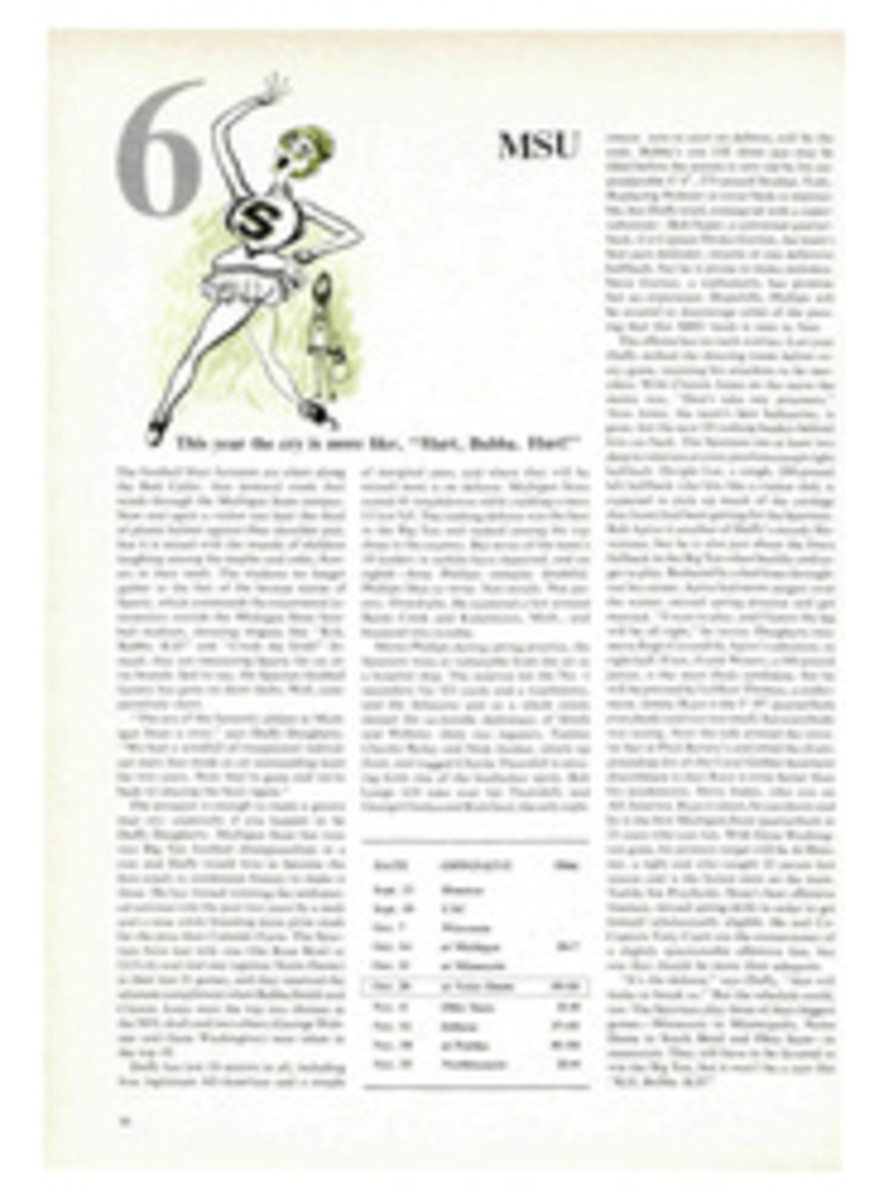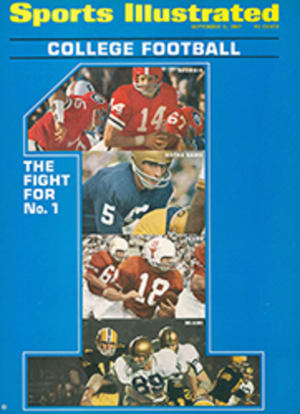
Out of trouble to win a double
Robert B. Dickson of McAlester, Okla. is one of those people who always looks as if he has just thought of something very funny but prefers to keep it to himself. When he does speak, which is not very often and certainly no more than necessary, the blue eyes turn serious behind the black-edged glasses that cover a large portion of his big, square face. More than likely, he will talk in jerky little phrases, as he did late last Saturday afternoon in trying to explain what it meant to him to win the 67th U.S. Amateur Golf Championship and thus become the first man since Lawson Little in 1935 to take both the British and U.S. championships in the same year.
"During those last few holes," Dickson said, "I was thinking it would be very nice to win the Amateur, the American Amateur [pause]...it sort of had a kind of special meaning [pause]...I mean after winning the British Amateur...and having played so little this summer...there was just something there...."
Throughout the final four holes of this 72-hole contest at The Broadmoor in Colorado Springs, you could tell that there was [pause] something there. For the first time, serious troubles were piling up on Dickson. Up to that point he had led the tournament all the way—with a 71 that gave him a two-stroke lead on the first day, with a second 71 that stretched his lead to three strokes on the second day and with a 74 that reduced his margin to one stroke on Saturday morning, a round which showed that lack of play during his six-month Army hitch—he had hardly gotten in 18 holes since the British Open—was hurting his game after all.
Now it was late Saturday afternoon, and while the rest of the field had retreated obligingly to the rear, Dickson could not shake off young Marvin Giles, the University of Virginia law student who was his playing partner through the day. All afternoon Giles played stroke for stroke with Dickson, remaining only a single shot to the rear, just as he had been when they left the first tee. When they reached the 15th hole, as Dickson explained later, shaking the collar of his white sports shirt, "It was getting a little hard to breathe." And he wasn't referring to Broadmoor's altitude.
It was off the 15th tee that Dickson hit his first bad drive of the round, but he recovered very well for a par while Giles had a sudden bogey after an excellent drive. Thus Dickson's apparent disaster became a safe-looking two-stroke lead.
At the 17th, however, Dickson again drove into the rough, and though he salvaged his par with a fine recovery and a brilliant chip to within two feet of the hole, Giles made a birdie 3, so they went into the 72nd and final hole with the lead again reduced to one.
Now Dickson drove into the rough once more, on the left this time and into a tight stand of small pines, with the ball half buried in long grass. Giles was again long and straight down the middle. Surrounded in the woods by officials, press, photographers and gallery, Dickson agonized minute after minute on how to extricate his ball well enough to save the par he would surely need. He tried different stances and swings with his six-iron. Standing 6' 3", he has a big, high arc, and the club struck an overhead television cable on one practice back-swing. An official pointed out he was entitled to a two-club-length drop from the obstruction. He measured carefully, rubbed his chin, made the drop and then hit a superb shot to within 80 yards of the green on this 467-yard, par-4 hole. From there he pitched delicately to within six feet and sank the putt he needed while Giles was taking a routine par. It was a beautifully gutsy way to win a major championship and a finish that well earned Dickson his place alongside Little, Bobby Jones and Harold Hilton, the only others ever to win both Amateur titles in a single year.
Broadmoor's new West course is a spectacular beauty—from one point, 6,700 feet up the Rockies, you can see halfway into Kansas—but for a while last week you could hardly see as far as your shoes. The tournament began on a glum and depressing Wednesday morning, with a cold, misty rain settling over the course. Play started, but by early afternoon conditions had worsened and the USGA cancelled the round, to the regret of almost no one, ordering 36 holes on Saturday instead.
Thursday's weather was almost as unfriendly as Wednesday's, with fog adding to the problems. Once in the morning and again in midafternoon play had to be suspended, and darkness fell with only 98 players in the clubhouse, the remaining 51 being scattered all the way back to the 8th tee. A minor revolt began to build around the bar in the clubhouse when it was announced that all those still out on the course would have to complete their rounds on Friday morning and then start out immediately on their second 18 holes.
But glorious weather on the final two days helped to erase the memory of the disagreeable beginning and, whether the old amateurs liked it or not, the event was a good one, for the best players rose to the top—Ron Cerrudo, Downing Gray, Bob Murphy and Marty Fleckman, the three-day wonder of last June's U.S. Open, finished behind Dickson and Giles in that order.
Counterbalancing the verve and ability that the youngsters brought to Broadmoor was one melancholy note. With this Amateur, an era has passed. Familiar faces that had enlivened the golf course and tap rooms of a dozen or more Amateur championships of the past were sadly absent. Billy Joe Patton, the ebullient Carolinian, was missing, as were Harvie Ward, Charlie Coe, Deane Beman and old Walker Cuppers like Ed Updegraff, Bob Gardner and Ward Wettlaufer.
Despite the return of a few perennials, such as Bill Campbell and Ed Tutwiler, those disciplined young men scarcely out of college or still in it, the raw material of the pro tour, took over. The ranks of the amateurs quite obviously belong to them now, or as long as they resist the lure of the PGA. "The reason I wanted to play in the tournament," said one oldtimer, "was that if I had finished in the first 10, I could well have been the country's low amateur by November. By then the others would be in Florida trying to qualify for the tour."

